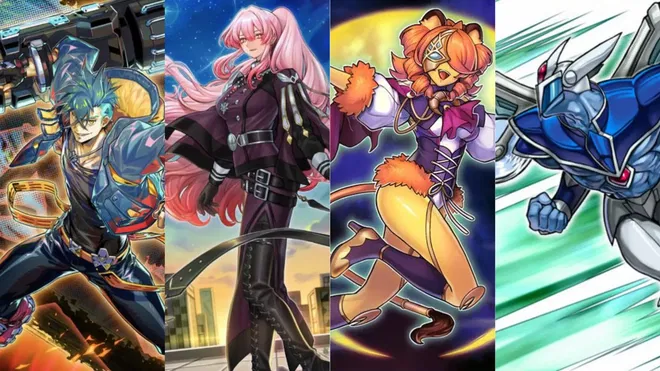The unveiling of the new Genesys format for Yu-Gi-Oh! has started a new phase of experimentation. Players are now bringing out old staples and reconfiguring longtime favorite decks in an attempt to break into this new frontier. We’ll be looking at some of the best archetypes capitalizing on the parameters Konami has laid out for Genesys.
Vanquish Soul
Vanquish Soul has the potential to make the jump to Genesys relatively unscathed despite being practically gutted by the Trading Card Game (TCG) and Official Card Game (OCG) Forbidden/Limited list. Thanks to a recent update to the point allocation list, only Vanquish Soul Hollie Sue has been assigned a point value. None of the other main members of the archetype are hit by the Genesys point allocation list revealed by Konami.
Vanquish Soul offers players a self-sufficient special summon package, an almost unrivaled grind game, and enough bodies to float into the extra deck all on their own. The K9 aspect might take some balancing out, though. The most prevalent hand trap package of K9-17 Izuna, K9-ØØ Lupis, and K9-17 "Ripper" will already cost a pretty hefty sum of points all on their own, but there should be enough points leftover to bring in some general staples like the Mulcharmy cards or maybe even a Dimension Shifter.
Exosister
Another archetype that managed to dodge the Genesys point list is Exosister. This archetype can heavily punish any attempt to move or activate cards from the graveyard and has a suite of tools that can negate, bounce, and/or banish the opponent’s resources.
One of the worst match-ups an Exosister deck could have is with Maliss normally. The latter archetype can easily play around the interaction points of banishing and bouncing that Exosisters are liable to do. Maliss is in an almost unplayable state in Genesys due to the blanket banning of Link monsters in the format. This factor basically puts Exosister in one of its most advantageous positions for the Genesys format, at least for now.
There’s also a lot of flexible spots currently available in an Exosister deck. None of the main Exosister cards or their main support options, like Sakitama and Aratama, were hit. This leaves a lot of points in a standard 100-point format available for the usual staples like the Mulcharmy cards, Effect Veiler, or even a Book of Eclipse.
Lunalight
The pattern for archetypes with the best advantage for the Genesys archetype continues as Lunalight is practically untouched. This archetype has been making a name for itself in recent regional tournaments over in the Standard format. It stands to reason that this deck has another chance to dominate the tournament scene with some minor edits to account for the Genesys point system.
Besides the loss of potential Link monster staples like S.P. Little Knight, the biggest hit to this deck is with Fire Formation - Tenki. Fire Formation - Tenki can be found at maximum copies in some recent Lunalight decks making the top cut. This Spell card unfortunately got tagged with a 40-point cost, making it nearly unusable unless the player is willing to cut other tools like Foolish Burial or Guardian Chimera.
HEROs
One of the older, and arguably, one of the most far-reaching archetypes in Yu-Gi-Oh! card game. The only main deck piece hit by the Genesys point list is Elemental Hero Stratos, which is coming in at 7 points a piece.
The archetype does suffer the sting of Genesys’ point allocation, though. Some notable tools, like Reinforcement of the Army and Masked Hero Dark Law, were hit with a 40 and 70-point tax. In exchange, some powerful old-school favorites like Destiny HERO - Destroyer Phoenix Enforcer and Destiny HERO - Plasma are at a much more manageable 20-point cost.
The sky is the limit when it comes to creativity behind HERO decks. The point cap system of the Genesys format can allow older archetypes like HERO a chance to become competitively viable again, thanks to the lowered power ceiling that was raised back when Link and Pendulum monsters were introduced into the game.




